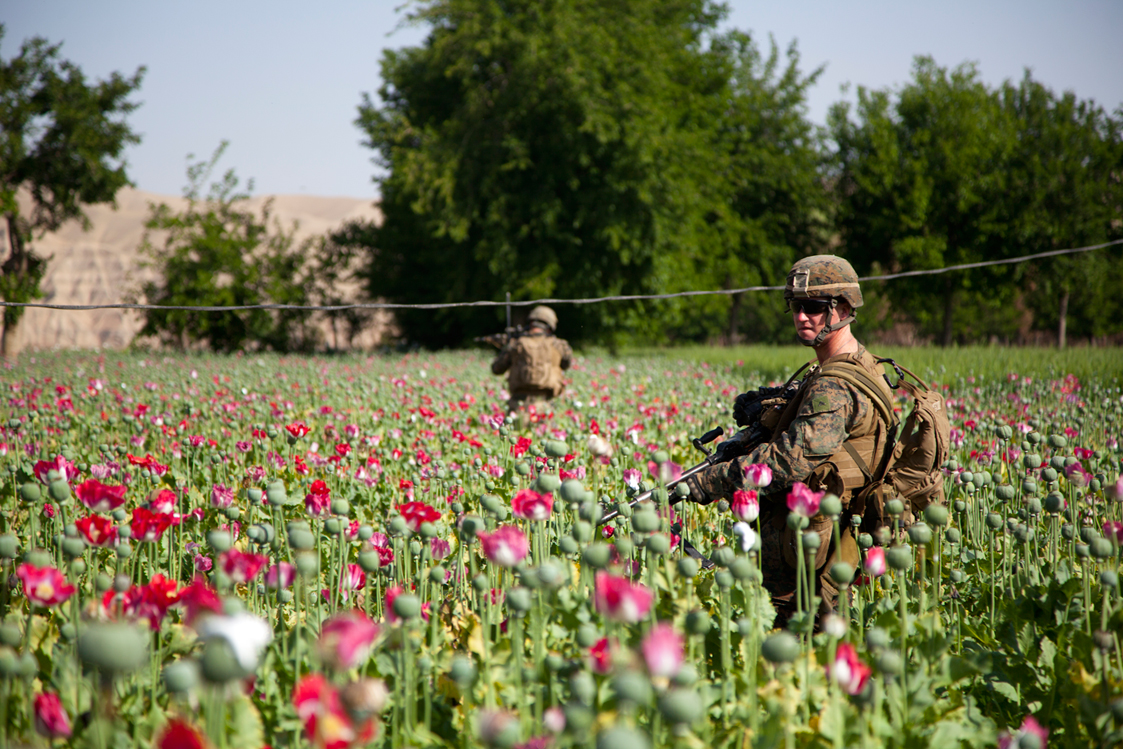 It is hard to be optimistic about the ongoing U.S. led peace talks with the Taliban. After nearly 18 years of conflict, the Taliban and its terrorist affiliations have proved to be impressively resilient adversaries.
It is hard to be optimistic about the ongoing U.S. led peace talks with the Taliban. After nearly 18 years of conflict, the Taliban and its terrorist affiliations have proved to be impressively resilient adversaries.
Despite significant growth in the capacity of the Afghan Government and its security forces, the Taliban still controls more territory than at any point since 2001. If Afghanistan is to ever prevail against this threat, it is imperative to understand what has enabled the Taliban to not only survive, but flourish against formidable counterinsurgency efforts. One likely source of strength is the drug trade.
The source of nearly 90% of the world’s supply of heroin, Afghanistan’s drug trade is as unique as it is vast. There are few modern examples of narco-states where drugs have become so intertwined in the political, economic and social structures of the nation.
The Taliban’s links to this trade are undeniable. Despite an inconsistent approach to narcotics when the Taliban held power in Afghanistan, the group has always managed to profit from its cultivation in one form or another. As a conflict crop, the value of this commodity was born out of the Soviet-Afghan war where the Mujahideen taxed local farmers to fund their insurgency.
The counter-narcotics efforts of the International Security Assistance Force (ISAF) and now Operation Resolute Support (RS) have been a failure. After $US9 Billion in counter-narcotics expenditure throughout the war, there has been no long-term reduction in opium cultivation.
While in-country interdictions have often been prized as a success story by ISAF/RS, total seizures between 2008-2018 were only the equivalent of 5% of the total opium output in 2017. Debate has often hampered this progress even further over the extent to which the Taliban profits from this trade. Yet while the true economic return on this commodity may be impossible to determine, the real value of the drug trade lies elsewhere.
When examining the various sources of finances that are available to an extremist group, there is no other commodity that provides what a narcotics trade does.
Opium production (like many other narcotics) is labour intensive. Its cultivation, transportation and refinement involve an enormous workforce that transcends the criminal, insurgent and civilian dimensions of the society. Once established, it becomes very difficult for the local economy to switch to other alternatives.
In an impoverished country like Afghanistan where credit is rare and poverty is often the greatest threat to individual livelihoods, the drug trade is able to offer credit and a guaranteed return that far exceeds its legal alternatives.
Consider then the importance of the Taliban in this equation. If the Taliban is able to provide land, credit and a guaranteed demand for the commodity, then they are also creating significant political capital in these areas.
The population’s livelihoods have now become dependent on the very commodity that the Taliban is facilitating. Whether the population likes the Taliban is largely irrelevant. In fact, recent surveys have certainly indicated the extent to which much of the population rejects Taliban ideology. Despite this, they have no alternative but to support the Taliban.
The inability of ISAF/RS and the Afghan Government to separate the (mostly rural) population from this trade explains much of their counterinsurgency setbacks. The Taliban is likely to hold far more influence over these sectors of the country and will therefore overpower the narrative coming from the legitimate government.
Previous attempts to eradicate the opium crops have not only fed into the Taliban’s narrative but have further distanced the Afghan Government from the population that it is trying to win over. If the country is to ever transition away from narcotics, it will need viable alternatives that allow the population the opportunity to reject the Taliban’s influence.
The key to any negotiation is to deal from a position of strength. It is difficult to see what that strength is for the U.S. in their negotiations at present. Without undermining the Taliban’s fundamental source of power, there is little incentive for them to reject a practice that has ensured their continued survival.
To defeat the Taliban, their influence over the local population must be undermined. Without separating that population from the drug trade it is unlikely that this will occur for the foreseeable future.
About the author: Gareth Rice is a Cavalry Officer in the Australian Army who has previously served in Afghanistan. He is currently undertaking postgraduate research on this topic at UNSW-Canberra. His views do not necessarily reflect the positions of the Australian Defence Force or the Australian Government.
No comments:
Post a Comment